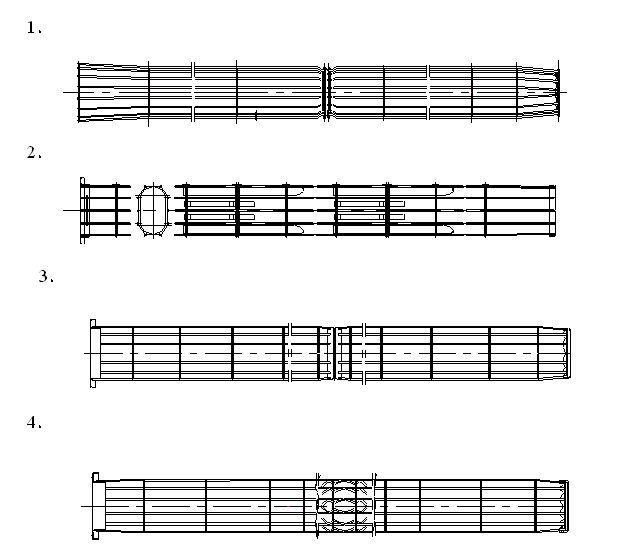


Dust removal framework; There are several types of specifications based on their appearance:
1. Round bag type (outer filter bag)
2. Round bag spring type (external filter type)
4. Envelope type
5. Multi section frame (elliptical multi section frame, circular bag multi section frame (plug-in, chuck type)) 6 The types of finished frames (frames with Venturi tubes, frames packaged in plastic bags and iron frames, and neatly arranged diamond frames) and dust removal skeletons in different forms have different functions and characteristics in use, which can demonstrate different roles and values. Moreover, the environmental and quality requirements for use will also vary. Therefore, different qualities and models of dust removal skeletons should be selected according to specific situations during use. The dust removal framework can be divided into upper and lower types according to the loading and unloading methods. The upper frame refers to the frame that is loaded and unloaded from the upper part of the bag filter, as shown in the figure.
The bottom mounted framework refers to the framework that is loaded and unloaded from the bottom of the bag filter, as shown in the figure. When the upper space of the dust collector is limited, this form of dust removal skeleton is used.
According to the structure of the dust removal skeleton itself, it can be divided into cage type, tension spring type, and segmented skeleton.
The multi section dust removal skeleton is divided into three connection methods:
1. Plug in type: Use a grinding tool to press the steel wire into shape, and when connecting, the steel wire is clamped into the horizontal ring of another section of the skeleton, as shown in the figure. Plug in skeleton is an older connection method that does not require transitional connectors and has a relatively low price. However, its connection stability is poor and the overall straightness is also poor. It is not suitable for use in places with strong external forces and vibrations. In addition, it has many contact points with the filter bag, which can easily wear out the filter bag and affect its service life.
Plug in dust removal framework
2. Connecting ring type: snap the horizontal rings of the two sections of the skeleton into the semi-circular grooves of the connecting ring, as shown in the figure. The connecting ring type is a relatively stable connection method, but its processing steps are relatively complicated, the cost is high, but the strength and verticality are good. At present, many large-scale filter bag dust removal equipment and dust removal skeletons use this connection method.
3. Chuck type: Make matching positive and negative chucks and weld them onto two sections of the bag cage, as shown in the picture. The chuck type connection has the following advantages over other connection methods: firm connection, easy disassembly and maintenance, good straightness, and reduced wear on the filter bag during spraying.
http://www.hbfxhb.com